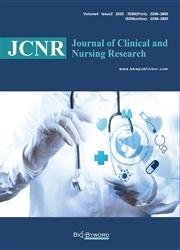Patients with Shoulder Dysfunction After Mastectomy Can Benefit from Nurse-Assisted Home-Based Range of Motion Exercises
引用次数: 0
Abstract
Background: Shoulder dysfunction is very common after mastectomy, and there is also less follow-up for physiotherapy services among patients with mastectomy. Objective: A study was conducted to determine the role of nurse-assisted home-based range of motion (ROM) exercises in patients with shoulder dysfunction after mastectomy. Methods: A pre- and post-interventional study design was used to collect data from 30 post-mastectomy patients. The subjects were selected on a voluntary basis. Informed consent was obtained from post-mastectomy patients who were discharged from different oncology hospitals in Pakistan prior to their inclusion in this study. After obtaining a baseline measurement, the patients were supervised with nurse-assisted ROM exercises at home. The nurse-assisted home-based ROM exercise program was designed for such patients, and the patients were followed-up for up to 1 month. The total duration of the study was 1 year from August 2015 to August 2016. Post-intervention measurement was performed at the patients’ home. The difference in terms of pain reduction and ROM improvement at the shoulder joint was recorded using goniometric measurements and the 100 mm visual analogue scale (VAS). Results: The mean age of the 30 subjects was 39.83 ± 5.89. The mean ROM of shoulder flexion before the exercise program was 106.03°, which improved to 133.93° after 1 month of the exercise program. The mean ROM of shoulder abduction before treatment was 94.83°, which improved to 127.13° after 1 month of supervised exercise program. The mean ROM of shoulder rotation before the exercise program was 127.53°, which improved to 152.03° after 1 month of the exercise program. Conclusion: The nurse-assisted home-based shoulder ROM exercise program is effective in terms of improving the range of motion and reducing pain at the shoulder joint in post-mastectomy patients.乳房切除术后肩部功能障碍的患者可以从护士辅助的家庭活动范围练习中获益
背景:乳房切除术后肩关节功能障碍非常常见,并且在乳房切除术患者中对物理治疗服务的随访较少。目的:进行一项研究,以确定护士辅助的家庭活动范围(ROM)运动在乳房切除术后肩关节功能障碍患者中的作用。方法:采用介入前和介入后研究设计,收集30例乳房切除术后患者的资料。研究对象是自愿选择的。在纳入本研究之前,从巴基斯坦不同肿瘤医院出院的乳房切除术后患者获得了知情同意。在获得基线测量后,患者在家中进行护士辅助的ROM练习。针对此类患者设计了护士辅助的居家ROM运动方案,并对患者进行了长达1个月的随访。研究总时间为1年,从2015年8月至2016年8月。干预后测量在患者家中进行。肩关节疼痛减轻和ROM改善方面的差异采用角度测量和100 mm视觉模拟量表(VAS)记录。结果:30例患者平均年龄39.83±5.89岁。运动前肩部屈曲的平均ROM为106.03°,运动1个月后改善为133.93°。治疗前肩关节外展的平均ROM为94.83°,经过1个月的监督运动后改善为127.13°。运动前肩关节旋转的平均ROM为127.53°,运动1个月后改善为152.03°。结论:护士辅助的家庭肩关节ROM运动方案在提高乳房切除术后肩关节活动度和减轻疼痛方面是有效的。
本文章由计算机程序翻译,如有差异,请以英文原文为准。
求助全文
约1分钟内获得全文
求助全文

 求助内容:
求助内容: 应助结果提醒方式:
应助结果提醒方式:


